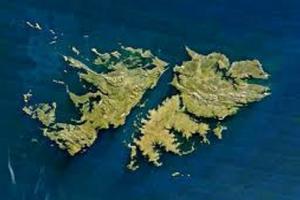Malvinas Islands is an archipelago of over 200 islands located less than 500 km from the Argentine mainland. Gran Malvina (west) and Soledad (east) are the two largest islands. | See images 1 and 2
Argentina regards these islands as part of its national territory, but is currently prevented from exercising effective sovereignty over the archipelago, which has been occupied by the United Kingdom since 1833.
At present, the Malvinas Islands are inhabited by a population of around 3,000 people of British origin, most of whom are descendants of a population that was transplanted into the islands by the United Kingdom after 1833.
There is a sovereignty dispute over the Malvinas Islands between the United Kingdom, which rules the archipelago de facto, and Argentina, which demands its return to it to exercise effective sovereignty over this territory.
This dispute is recognized by the United Nations (UN), which considers the Malvinas Islands a territory pending definition.
Since 1965 the UN has issued several resolutions calling on both sides to embrace negotiations to reach a peaceful settlement of the dispute, calling that has been so far ignored by the United Kingdom.

1. Distance between Malvinas Islands and the Argentine mainland. 2. Malvinas Islands map. 3. Map showing the territory occupied by Spain before 1810.
Historical arguments
. Upon emancipating from Spain in 1810, Argentina inherited the Malvinas Islands along with the rest of the territory which had been until then occupied by Spain. | See image 3
This was so by application of a principle under international law called uti possidetis iuris, which has been recognized by the International Court of Justice and applied to establish the borders of the new states that emerged from the decolonization processes in Latin America, Africa and Asia.
According to this principle, the new state that results from an independence process retains the territory occupied until then by the colonial power from which it becomes independent.
Spain had effectively occupied the Malvinas Islands since the seventeenth century until 1810 in an uninterrupted, public and unchallenged mode. As many as 32 Spanish governors had ruled the islands until 1810, who had had permanent residency in this territory.
Such occupation – and sovereignty – of Spain over the archipelago was even recognized by other states like the United Kingdom when they tried to occupy some areas within the islands and faced protest from Spain.
As regards the United Kingdom, a secret expedition arrived at the islands in 1766 and established a settlement called Port Egmont. Upon learning about it, Spain expelled the occupants and reached an agreement with the United Kingdom in 1771, which recognized the Spanish sovereignty over the archipelago.
. From 1810 to 1829 Argentina carried out numerous sovereign acts over the Malvinas Islands which at no time were protested by the United Kingdom, which did not raise any claim to the islands.
Such acts included a public ceremony for taking formal possession of the islands on behalf of Argentina by the colonel David Jewett in 1820, fishing legislation, land grants, among others.
Not even did the United Kingdom make a reference to the Malvinas Islands when in 1825 it recognized the Argentine state and signed a Friendship, Trade and Navigation Agreement with Argentina.
The United Kingdom only changed its stance in 1829, when on June 10 the Argentine government created the Political and Military Command of the Malvinas Islands and appointed Luis Vernet as the commander. After having remained silent for over half century, the United Kingdom protested this decision. | See image 5
. The occupation of the Malvinas Islands by the United Kingdom from 1833 onwards was carried out in contravention of existing international law on acquisition of territory.
Indeed, such occupation followed an invasion to the islands by a British vessel on 3 January 1833, which took place after the expulsion of the Argentine officials who refused to acknowledged authority to the invaders.
This action, conducted in peacetime and without prior announcement, was immediately protested before the British Chargé d’Affaires in Buenos Aires. Such protest was renewed on several occasions by the Argentine representative in London.
. From 1833 until now Argentina has never recognized the legitimacy of the British occupation of the islands and also continued protesting against such occupation and demanding the exercise of effective sovereignty over the archipelago.
On the other hand, there were several statements over time in the United Kingdom questioning the legitimacy of the British occupation of the islands and, in many cases, calling for their return to Argentina.
In 1966 the United Kingdom for the first time agreed to start negotiations without prior conditions with Argentina over the sovereignty over the islands. Both countries signed various documents addressed to the UN to report on the progress of the negotiations.
Such negotiations, even though suspended later without satisfactory results, involved a recognition by the United Kingdom of the existence of a sovereignty dispute over the Malvinas Islands.

4. The Malvinas Islands were invaded by the United Kingdom in 1833. 5. Luis Vernet, Political and Military Commander of the Malvinas Islands (1829-1833). 6. Puerto Argentino.
Malvinas Islands at the United Nations
After its creation in 1945, the UN started a decolonization process aimed at granting autonomy to vast regions of Africa and Asia that were still under the colonial yoke.
In this context, in 1960 the UN General Assembly (UNGA) adopted Resolution 1514 “Declaration on Granting of Independence to Colonial Peoples”, which proclaims the need to bring a speedy and unconditional end to colonialism in all its forms.
This resolution enshrined two principles that should guide the decolonization process: 1) Self-determination of peoples, and 2) Territorial integrity. The latter is a limit to the former, in the sense that self-determination cannot apply to territories that were forcibly detached by another country.
Article 6 of the Resolution defines the principle of self-determination in the following terms: “any attempt aimed at partial or total disruption of national unity and the territorial integrity of a country is incompatible with the purposes and principles of the UN Charter”.
In implementation of Resolution 1514, in 1965 the AGNU adopted Resolution 2065, which specifically concerns the Malvinas Islands. This Resolution contains the elements that frame the issue:
. The UNGA regards the Malvinas Islands case as one of the forms of colonialism that must be ended.
. The UNGA takes note of the existence of a sovereignty dispute over the Malvinas Islands between Argentina and the United Kingdom, as a result of which the British presence on the archipelago becomes questioned.
. The UNGA urges both governments to engage in negotiations in order to reach a peaceful solution to the dispute.
In 1966, in compliance with Resolution 2065, the United Kingdom agreed to start negotiations with Argentina to settle the dispute, during which many alternatives were explored.
However, in 1975-1976 the United Kingdom began performing unilateral acts on the islands related to the exploitation of natural resources. These acts were protested by Argentina and led to bilateral tension.
In 1976, the UNGA adopted Resolution 31/49 with only one vote against – the one by the United Kingdom –. This Resolution: 1) Recognizes the “permanent efforts” of the Argentine government to “facilitate the decolonization process and promote the welfare of the population of the islands”, and 2) Calls on both parties to refrain from introducing “unilateral modifications to the situation” while negotiations are not concluded.
In 1982, a war between Argentina and the United Kingdom over the Malvinas Islands took place. However, the war did not alter the nature of the sovereignty dispute between the two countries and the UN’s position remained exactly the same.
As a matter of fact, a few months after the war, in November 1982, the UNGA adopted Resolution 37/9, which calls on both parties to resume negotiations to reach a peaceful solution to the dispute, basing on previous resolutions.
This request was reiterated in subsequent resolutions which UNGA adopted almost annually since then until now.

7. Argentine delegation to the UN General Assembly in 1965, led by José María Ruda. 8. Malvinas war, which took place in 1982. 9. Malvinas Memorial, located in Ushuaia.
Situation today
Since 1989, Argentina and the United Kingdom maintain normal diplomatic and consular relations, cooperate in many areas and share positions in several multilateral issues, but the question of the Malvinas Islands is still pending.
At present, there are no negotiations between Argentina and the United Kingdom over this issue: the UN, Argentina and a large majority of countries call the United Kingdom to agree to negotiate with Argentina, but the United Kingdom has consistently refused to negotiate.
Since some years ago, the United Kingdom has raised the argument that the islanders – inhabitants of the islands – have a right to self-determination under Resolution 1514, adding that, in exercising that right, they have decided to remain British, hence the islands they inhabit are British.
In this regard, Argentina’s stance can be summarized as follows:
. A sovereignty dispute over the Malvinas Islands does exist between Argentina and the United Kingdom. It has been recognized by the UN by Resolution 2065 and all subsequent resolutions on the issue.
. The principle of self-determination of peoples, as the UN has said repeatedly, does not apply to the case of the Malvinas Islands because only peoples are entitled to self-determination. The islanders do not meet this requirement because they are descendants of a population transplanted by the United Kingdom to the islands.
. The principle applicable to this case is territorial integrity, which prevents the application of self-determination, because in 1833 United Kingdom occupied the islands by force, after it evicted the resident Argentina population and prevented their return. This act involved a breach of integrity or unity of the Argentine territory.
. Argentina accepts and does not intend to change the British nationality of the resident population on the islands, just as it accepts the foreign nationality of the many foreigners who inhabit the Argentine mainland. The dispute does not concern the nationality of the population but the territory that they inhabit – the Malvinas Islands – which is Argentine.


